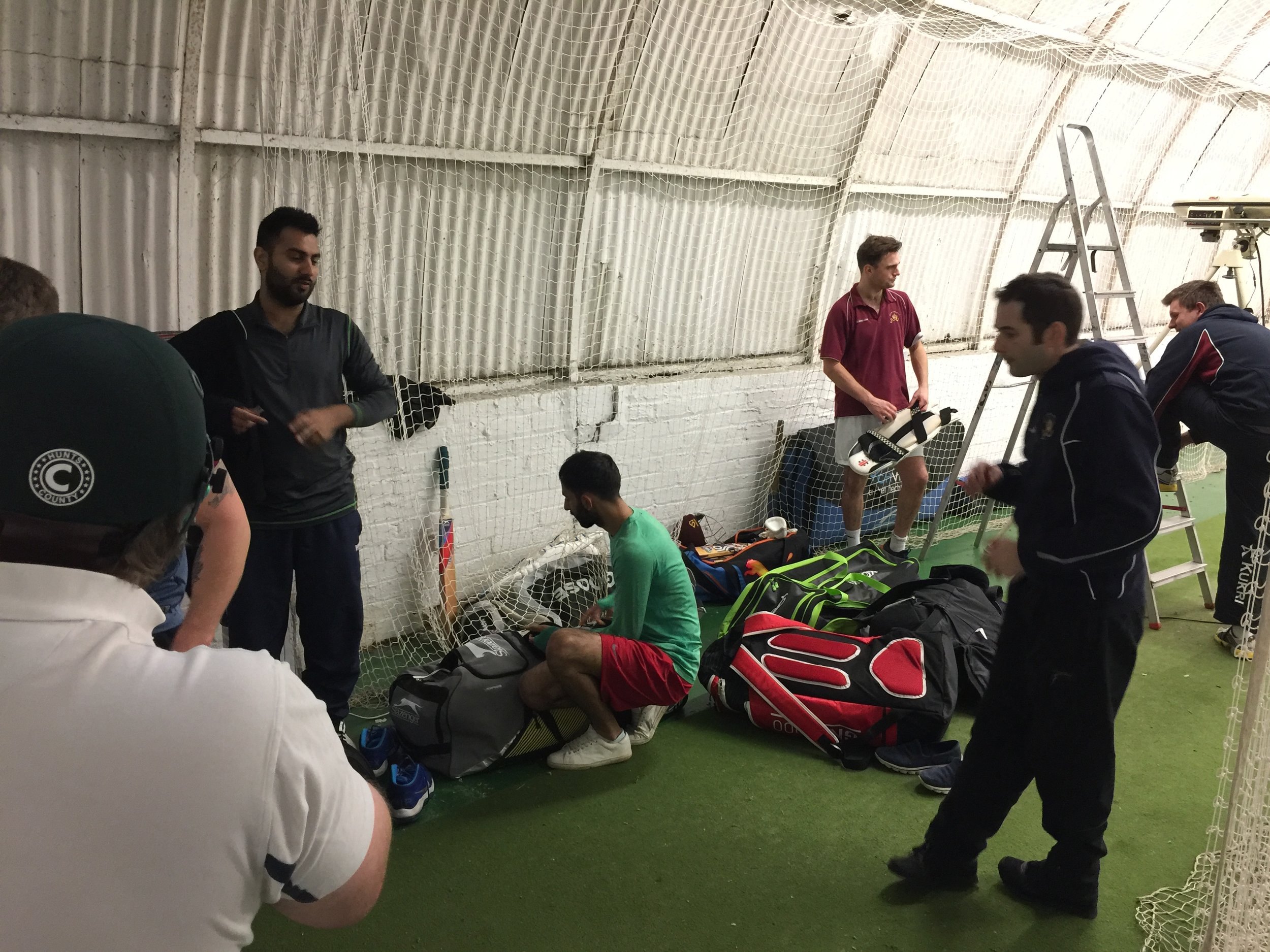Last year we put together a highly planned and organised Autumn series of training sessions. Players had to commit to 10 weeks and all had plans to follow.
The success of those sessions was exceptional in both measureable (a big jump in runs and wickets) and unmeasurable (the feeling of working as a team) ways.
But it was not perfect.
A few guys felt left out because I kept it to just eight players once a week. One player in the group trained hard then barely played a match all year, adding to the feeling of space being wasted. Not everyone made noticeable improvements.
So, this year I have mixed it up and changed it from one group of eight, to several small groups of four to six, with an hour each. This allows for more players with a wider range of standards, while keeping the focus on specific improvements.
I've also moved the focus away from identifying and correcting technical errors and towards encouraging players to solve their own issues. I have asked guys to bring their own intentions to the sessions and I can help draw out their own ways of solving the issues with drills, ideas and analysis.
The first session was a fascinating mixture of different responses to this challenge. Some guys wanted to talk more, other guys struggled to find a focus and some hit the nail on the head first time.
It certainly has a different feel. I plan much less, instead focusing on pushing players towards certain drills and practices based on what they tell me. However, I am not dogmatic about it and also let players make their own mistakes, even if I think I know the answers.
This is a fresh approach for me and it's not in my comfort zone. I like to plan everything to the finest detail. To keep my hands off and act more as consultant rather than dictator is not easy. But I know this is the only logical way. I can't play for people, I can only help people work out their best way of playing.
However, after two sessions things look good.
There have been 14 players at the sessions (with another four showing interest). That's a huge increase on last year and covers a wider range of skill levels. Here has been the breakdown of self-directed goals:
1. Develop dip in spin bowling.
2. Improve consistency of driving on the ground.
3. Hit with more power to pierce the infield.
4. Improve hip drive to fix a follow-through issue.
5. Learn to consistently play later, and hit harder leg side shots.
6. Learn to sweep and reverse sweep consistently, and bowl with more pace.
7. Play straighter.
8. Off drive consistently.
9. Put more power and timing into drives.
As you can see, these things are mainly technical with no focus on tactics. I still have all my tactical ideas ready to go but this time of year is a great time to build a platform of fitness, technical ability and general self-confidence to take into the start of next year.
In each case, we will measure how effective we are in this goal with a combination of measureable effects on PitchVision and how the player feels they have improved.
That leaves five players without a goal set.
Two have had sessions to "get back into it" and ended up trying a few things without direction. They have been asked to come up with better focus for the next session.
The last three are juniors. As they are younger, I am putting less emphasis on them to come up with plans and letting them play around more, challenging them to both fit into the senior culture and stay focused.
When they do it right, they coach each other pretty well, offering advice and generally challenging each other. When they fall down it descents into insults or doing things they "can get away with".
So, for example, one youngster was batting in nets and backing away to shorter balls. The bowler shouted at him that he was "scared of the ball" and should stop stepping away. The boy responded by saying "I'm not! Shut up!"
Now, I know this kid is far from scared of seam bowling. He's tough and strong. I have seen him challenged by a bowling machine bowling fast and short at him and he steps into the ball and smashes it. It's not fear, he is making room to score through his favoured off side.
So, I stopped the net and told them they were both sort of right. The batter was backing away and the bowler was right to point out that this solution might not be the best way to play. I agree, he tends to hit them in the air. However, I also told them both that saying "you're scared" will not get theat point across. It will rile up and cause defensiveness. Instead of looking for an emotive cause, look for a solution. What can you do to stop it happening? How can the bowler help the batsman do it?
These questions make the same point but with the desired effect.
But anyway, back to the sessions.
I plan to continue to run these as they are, track results and report back on the findings at the end of this phase (around December time). Then we can move into more tactical skills.
Positive signs, but a long way to go yet.










